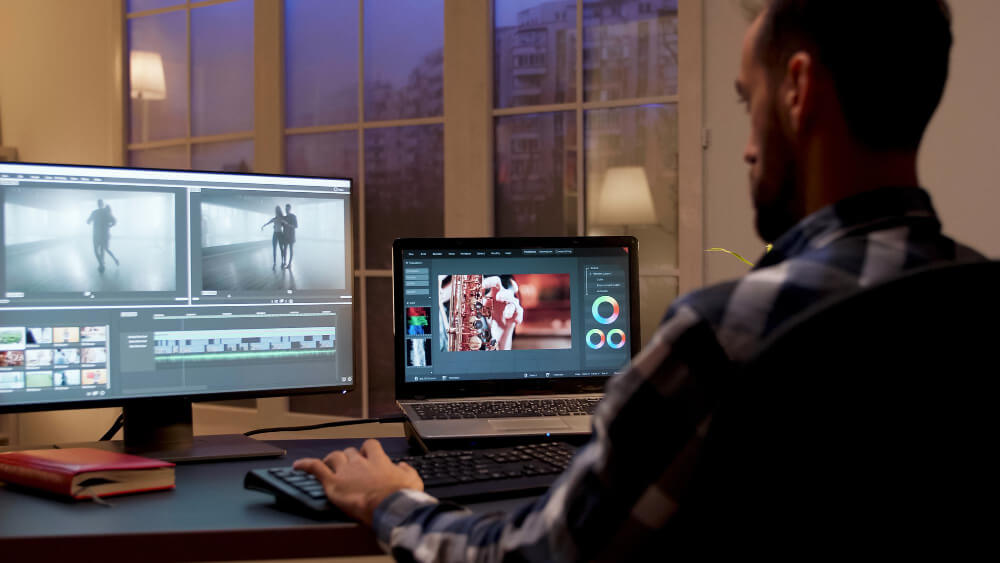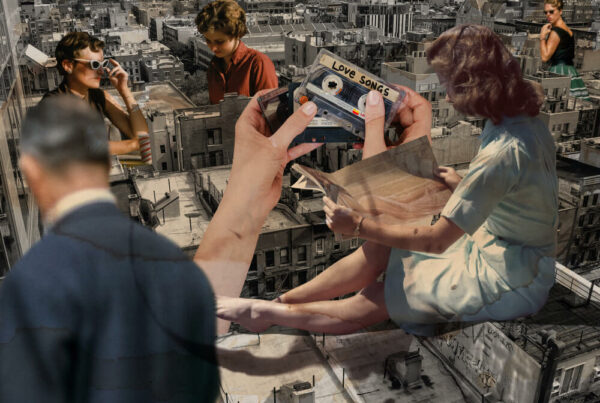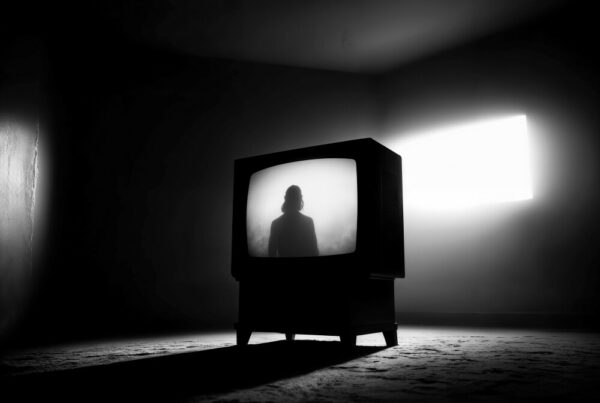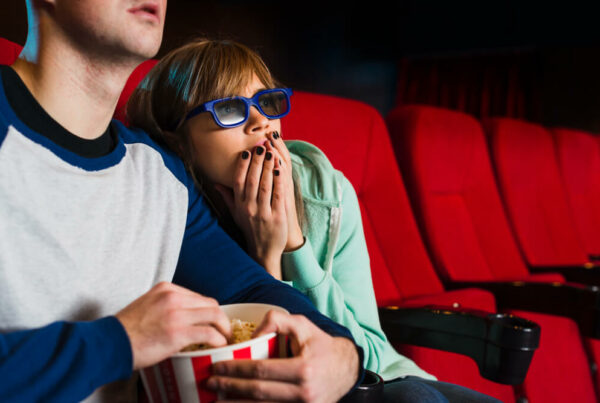Introduction
Film editing is often referred to as the invisible art. While a well-crafted performance, stunning cinematography, or a captivating screenplay can steal the limelight, editing is what brings all these elements together to form a cohesive and compelling story. The editor is the unsung hero who stitches together disparate scenes, frames, and sounds to create a seamless narrative flow.
Whether it’s the heart-pounding tension built by rapid cuts in an action sequence or the emotional resonance created by a perfectly timed cutaway in a drama, editing has the power to transform raw footage into a cinematic experience. In this blog, we’ll explore some of the most impactful editing techniques that filmmakers use to guide the audience’s emotions and enhance storytelling.
1. Continuity Editing: Maintaining Narrative Flow
Continuity editing is one of the most fundamental techniques in film editing. Its primary goal is to ensure that scenes flow smoothly from one to the next, maintaining the illusion of time and space within the film’s world. By focusing on the natural progression of action and narrative, continuity editing helps the audience stay immersed in the story without being distracted by jarring or disorienting cuts.
Key Elements of Continuity Editing
- Match Cuts: This technique involves matching the action, sound, or composition from one shot to the next, ensuring a smooth transition. For example, if a character is about to open a door in one shot, the following shot should continue the motion seamlessly.
- Eye-Line Match: When a character looks at something off-screen, the next shot will typically reveal what they are looking at. This helps maintain spatial relationships and keeps the viewer oriented.
- 180-Degree Rule: To preserve the spatial consistency of a scene, the camera should stay on one side of an imaginary 180-degree line. Crossing this line can confuse the audience about the spatial relationships between characters or objects.
Example in Film
In Casablanca, the seamless transitions between shots during dialogue scenes demonstrate the use of continuity editing to keep the audience focused on the emotional dynamics between the characters. The editing serves the story without drawing attention to itself, allowing viewers to remain fully engaged.
2. Montage: Condensing Time and Space
A montage is a series of quick, consecutive shots that condense time, space, or information to quickly convey a sequence of events. This technique is used to show the progression of time or to quickly establish a character’s development, often without dialogue. It can be a powerful way to move the story forward while providing important context or backstory in a condensed format.
When to Use a Montage
- Character Growth: A montage can be used to show a character’s growth or transformation over time. This is often seen in sports films or stories about training, where a character goes from novice to expert in a short time span.
- Passing of Time: Montages are perfect for showing the passage of time in a narrative, especially when long periods must be conveyed in just a few minutes of screen time.
Example in Film
In Rocky, the iconic training montage shows Rocky Balboa’s transformation from an underdog fighter to a champion contender. Set to inspirational music, the rapid cuts and condensed timeline give the audience a sense of his dedication and growth, even though only a few minutes have passed on screen.
3. Cross-Cutting (Parallel Editing): Building Tension Between Multiple Storylines
Cross-cutting, or parallel editing, is when the film cuts back and forth between two or more scenes happening simultaneously but in different locations. This technique is often used to build tension, as the audience anticipates how the different storylines will converge or affect one another.
When to Use Cross-Cutting
- Building Tension: In action or thriller films, cross-cutting is frequently used to create tension. For example, one scene might show a character disarming a bomb while the other scene shows a group of people unknowingly walking toward danger.
- Juxtaposing Storylines: Cross-cutting can also be used to contrast two different storylines or themes, showing how they are connected or how they impact each other.
Example in Film
In The Godfather, the cross-cutting between Michael Corleone’s baptism and the simultaneous assassination of the other mafia heads is a masterclass in parallel editing. The peaceful, solemn religious ceremony is juxtaposed with the brutal violence, creating a striking contrast that enhances the emotional impact of both events.
4. Jump Cuts: Creating Disorientation and Urgency
A jump cut is an abrupt transition between two shots that breaks the continuity of time and space. Instead of smoothing over the transition, jump cuts emphasize the passage of time or create a jarring, disorienting effect. While jump cuts can be seen as a violation of traditional editing rules, they are often used intentionally to add energy or disrupt the audience’s sense of time.
When to Use Jump Cuts
- Conveying Disorientation: Jump cuts are often used in scenes where a character feels disoriented, confused, or under duress. The abrupt shifts in time and space mirror the character’s mental state.
- Adding Urgency: Jump cuts can also be used to add a sense of urgency or chaos to a scene. By skipping over small actions and focusing on the most important moments, the pacing becomes more frenetic and intense.
Example in Film
In Breathless by Jean-Luc Godard, jump cuts are used throughout the film to create a sense of disjointed reality and to break traditional cinematic conventions. The frequent use of jump cuts reflects the protagonist’s restless, rebellious nature and the film’s overall experimental tone.
5. L-Cuts and J-Cuts: Smoothing Transitions Between Scenes
L-cuts and J-cuts are techniques used to transition between scenes in a smooth, natural way by overlapping audio and visual elements. In an L-cut, the audio from the previous scene continues to play as the visuals shift to the next scene. Conversely, in a J-cut, the audio from the next scene starts playing before the visual transition, creating anticipation or setting the tone for what’s to come.
When to Use L-Cuts and J-Cuts
- Smooth Transitions: These techniques are great for creating a smooth transition between two scenes, especially when there is a change in time, location, or tone.
- Setting the Mood: J-cuts, in particular, are useful for setting the mood or tone of the next scene before the audience even sees what’s happening.
Example in Film
In The Graduate, L-cuts are used frequently to blend the dialogue and action between scenes, helping to maintain the flow of the narrative. The overlapping of sound and visuals adds to the seamless, dreamlike quality of the film’s pacing.
6. Cutaway Shots: Enhancing Emotional and Narrative Depth
A cutaway shot is when the editor cuts away from the main action to show a related detail or secondary scene. Cutaways are often used to provide context or to emphasize a character’s reaction or inner thoughts. They can also be used to build tension or add layers of meaning to a scene.
When to Use Cutaways
- Adding Emotional Depth: Cutaways to a character’s reaction can add emotional depth to a scene by showing how they are processing the events around them. This is often more powerful than simply keeping the camera on the action itself.
- Building Tension: Cutaways can also be used to build tension by showing an important detail that the characters are unaware of, such as a ticking bomb or a lurking villain.
Example in Film
In Schindler’s List, cutaway shots of objects, such as the list of names or the pile of confiscated belongings, add emotional weight to the narrative. These seemingly small details become symbols of the broader horror and tragedy unfolding, enhancing the film’s emotional resonance.
7. Cutting on Action: Creating Seamless and Dynamic Transitions
Cutting on action is a technique where the editor cuts from one shot to another while the subject is still in motion. This creates a seamless transition and keeps the flow of the action smooth and dynamic. By cutting on motion, the editor can hide the cut and make the transition feel natural.
When to Use Cutting on Action
- Action Sequences: Cutting on action is commonly used in fight scenes or chase sequences, where the movement needs to feel fluid and uninterrupted.
- Dialogue Scenes: This technique can also be used in dialogue scenes, where the cut happens as a character gestures or moves, making the transition less noticeable.
Example in Film
In The Bourne Ultimatum, cutting on action is used extensively in the fight scenes to maintain the frenetic pace and energy. The cuts happen as characters throw punches or make sudden movements, keeping the audience engaged without drawing attention to the editing.
Conclusion: Editing as the Silent Storyteller
Film editing is an art that works behind the scenes to shape the narrative, evoke emotions, and guide the audience’s experience. Whether you’re maintaining the continuity of the story or using jump cuts to create chaos, every cut has a purpose. By mastering these editing techniques, filmmakers can create more impactful and emotionally resonant stories that leave a lasting impression on the audience.
Understanding the power of editing will not only enhance your technical skills but will also open new possibilities for creative storytelling. As you continue to experiment with these techniques, you’ll discover how the right edit can elevate even the simplest of scenes into something truly memorable.





